RARE! WWI 1st Army A.E.F. Field Printed Meuse-Argonne Offensive VENDRESSE & RAUCOURT




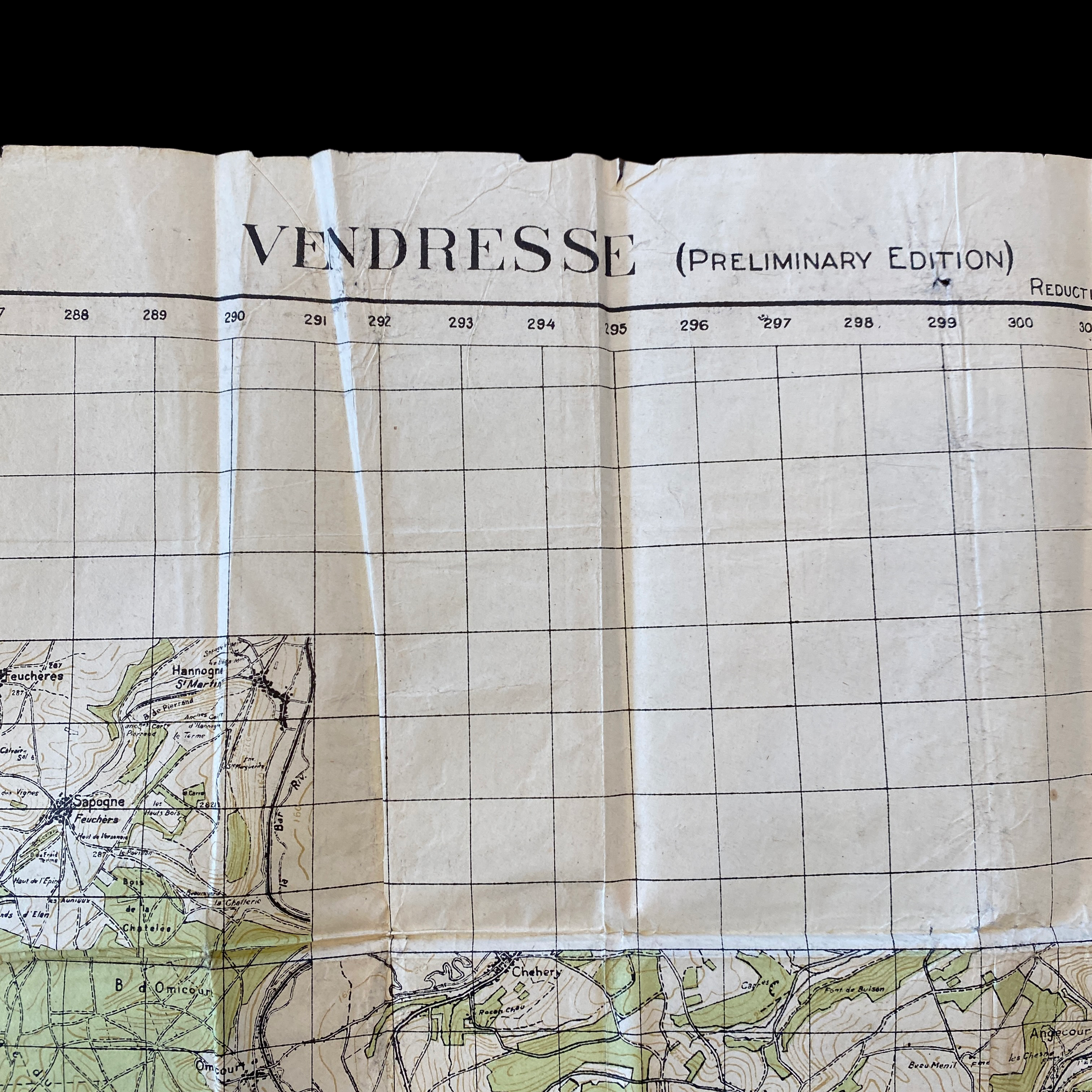



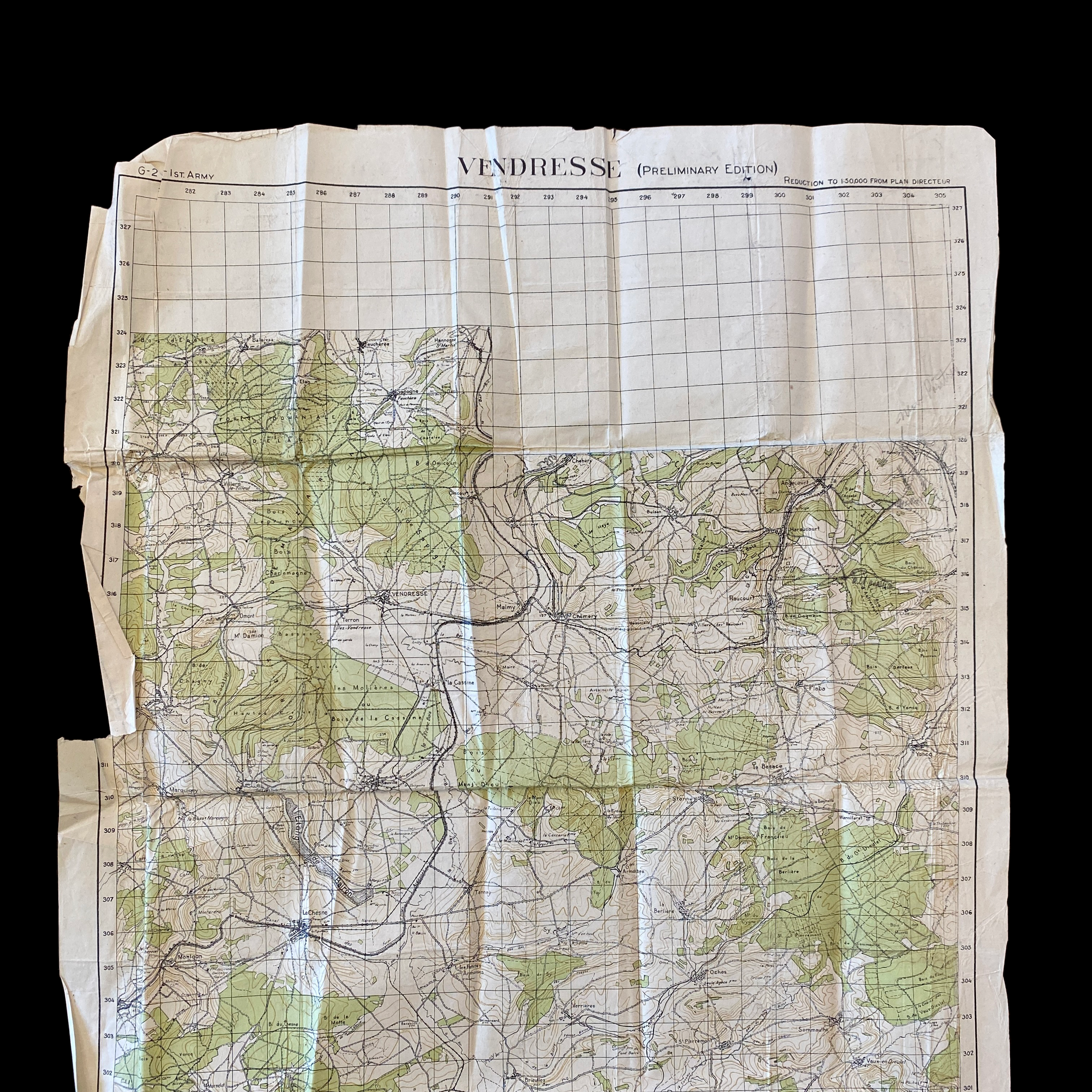




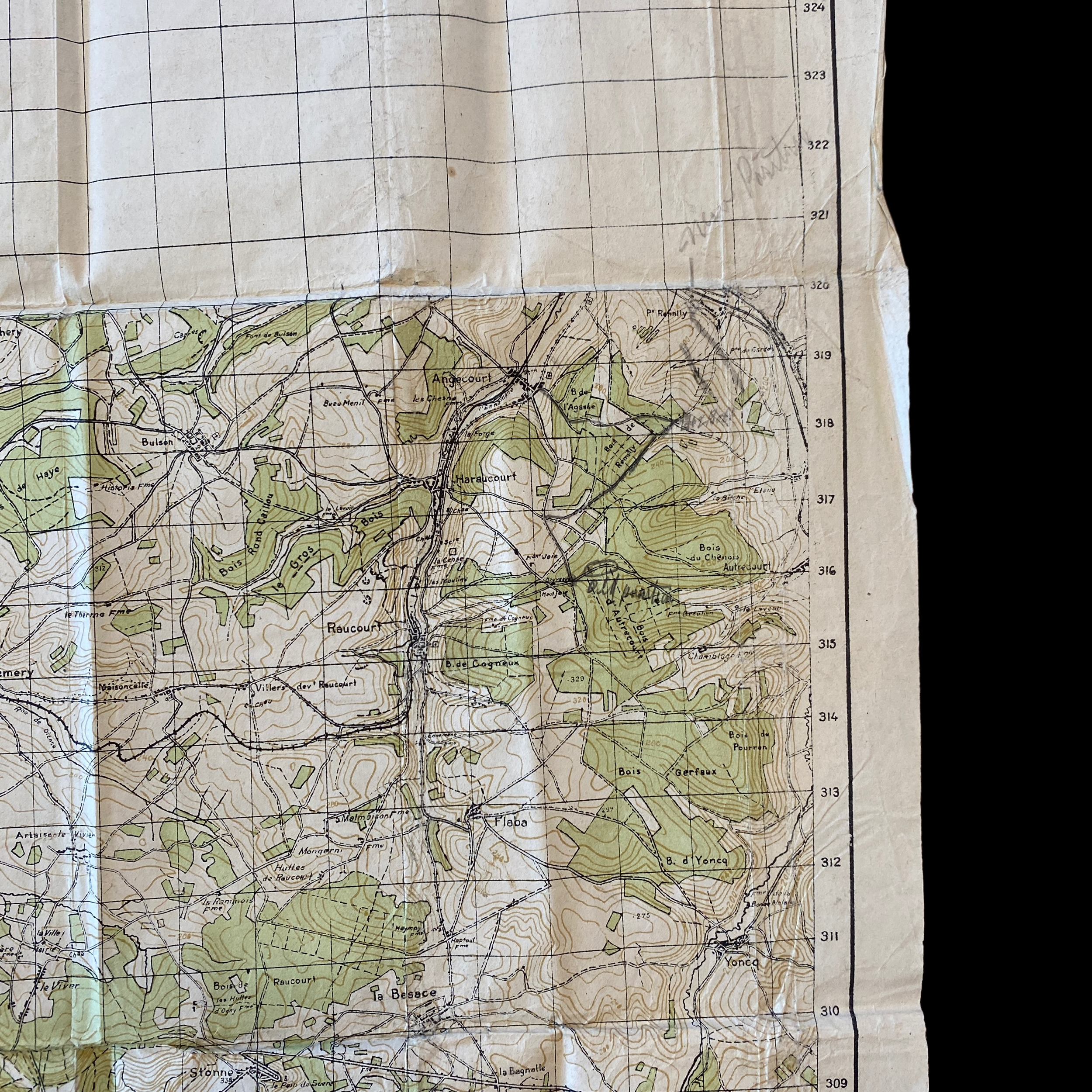
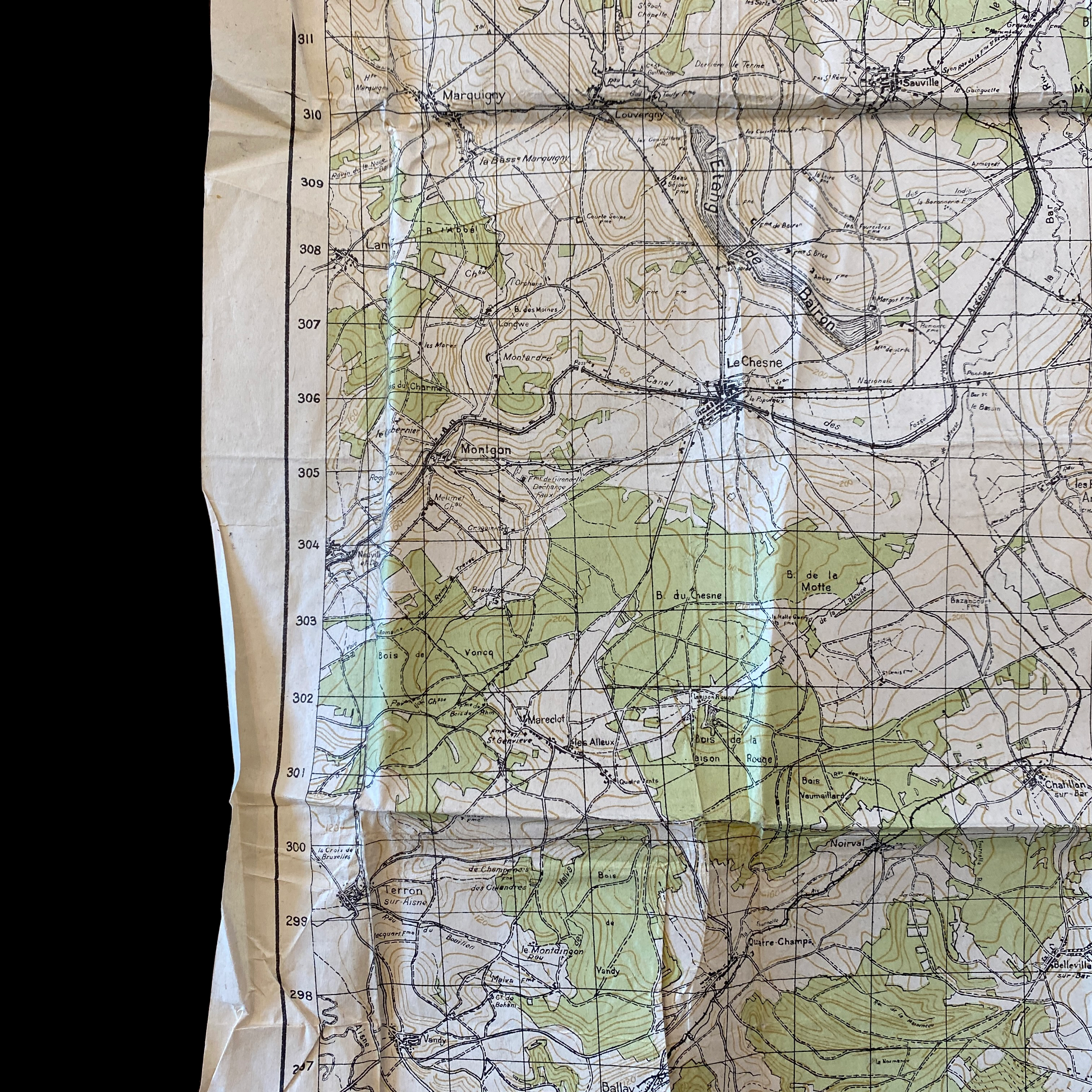






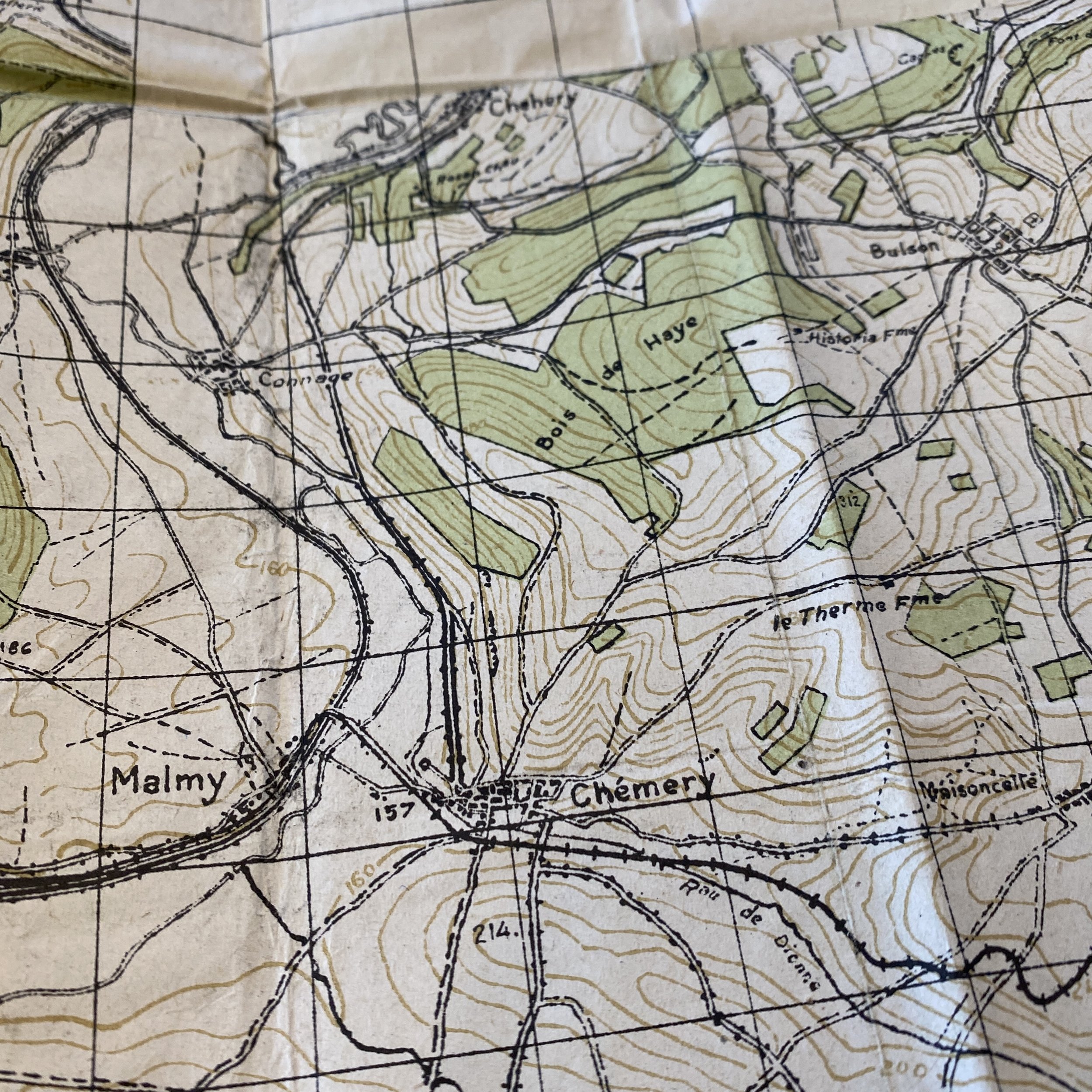





RARE! WWI 1st Army A.E.F. Field Printed Meuse-Argonne Offensive VENDRESSE & RAUCOURT
Comes with hand-signed C.O.A.
This incredibly wearing museum grade World War I AEF operations map was used by the American first army during the Meuse-Argonne Offensive of 1918. The Meuse-Argonne Offensive was a part of the final Allied offensive of World War I. It was one of the attacks that brought an end to the War and was fought from September 26 – November 11, 1918, when the Armistice was signed. This extremely low print count “PRELIMINARY EDITION” titled “VENDRESSE” shows the battlegrounds of RAUCOURT, VENDRESSE, CHEMERY, and MALMY. What makes this 1st Army trench map even more special is its heavy use and soldier combat markings. The Meuse-Argonne Offensive was the largest operations of the American Expeditionary Forces (AEF) in World War I, with over a million American soldiers participating. It was also the deadliest campaign in American history, resulting in over 26,000 soldiers being killed in action (KIA) and over 120,000 total casualties. Indeed, the number of graves in the American military cemetery at Romagne is far larger than those in the more commonly known site at Omaha Beach in Normandy. This map was used during the September through November months of 1918 as the American Expeditionary Force in French soldiers push the Germans back to what would soon be the Armistice Line.
This is an incredible piece of World War I history that would make an amazing addition to any World War I or Meuse-Argonne Offensive collection.
Meuse-Argonne Offensive of 1918:
At 5:30 on the morning of September 26, 1918, after a six-hour-long bombardment over the previous night, more than 700 Allied tanks, followed closely by infantry troops, advance against German positions in the Argonne Forest and along the Meuse River.
Building on the success of earlier Allied offensives at Amiens and Albert during the summer of 1918, the Meuse-Argonne offensive, carried out by 37 French and American divisions, was even more ambitious. Aiming to cut off the entire German 2nd Army, Allied Supreme Commander Ferdinand Foch ordered General John J. Pershing to take overall command of the offensive. Pershing’s American Expeditionary Force (AEF) was to play the main attacking role, in what would be the largest American-run offensive of World War I.
After some 400,000 U.S. troops were transferred with difficulty to the region in the wake of the U.S.-run attack at St. Mihiel, launched just 10 days earlier, the Meuse-Argonne offensive began. The preliminary bombardment, using some 800 mustard gas and phosgene shells, killed 278 German soldiers and incapacitated more than 10,000. The infantry advance began the next morning, supported by a battery of tanks and some 500 aircraft from the U.S. Air Service.
By the morning of the following day, the Allies had captured more than 23,000 German prisoners; by nightfall, they had taken 10,000 more and advanced up to six miles in some areas. The Germans continued to fight, however, putting up a stiff resistance that ultimately forced the Allies to settle for far fewer gains than they had hoped.